Katana x Salesforce: Centralize your order management
Centralize your order management with the new Katana x Salesforce integration made possible with Zapier.
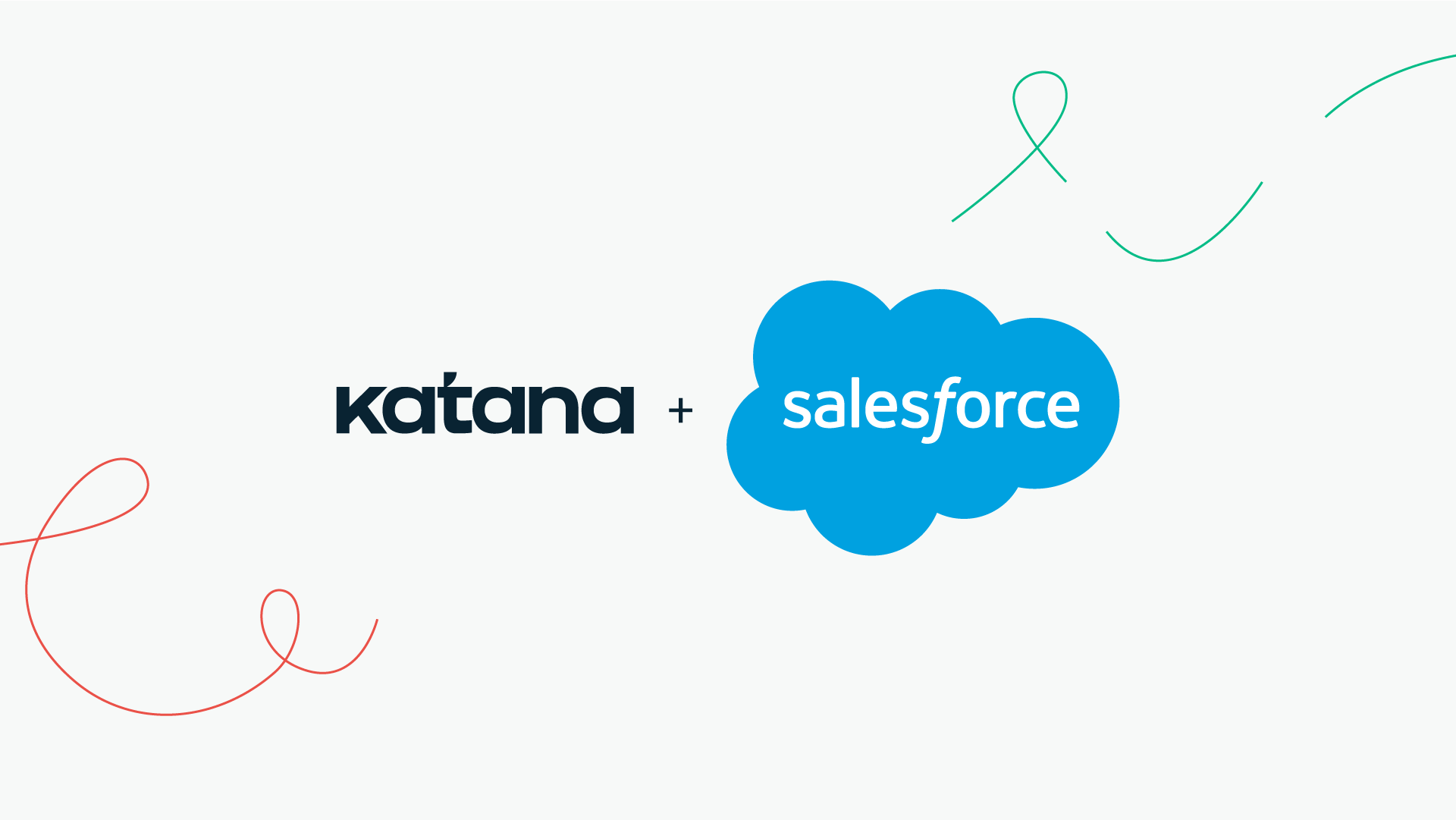
We have another workflow integration tested and working with Zapier! 🙌
Manufacturers managing orders with Salesforce can now integrate their accounts to set up automatic import of orders from Salesforce to Katana, helping you manage your sales and manufacturing orders from one platform.
Salesforce is just another app in our long list of integrations with Zapier. If you want to read more about the endless workflow combinations you can create, be sure to click here.
How to set up automatic imports of Salesforce orders
Setting up sales imports for Salesforce orders is more complicated than other applications.
To help you get started, feel free to use the Katana x Salesforce template we put together.
The following guide is meant to be a condensed version. However, you can follow an in-depth guide over at the Knowledge Base or arrange to have a call with us, and we can help you implement the integration.
Step 1: Log into your Zapier account to create a Zap.
Choose “Salesforce” as the app and set the trigger as “New Record”
This will create automatic imports for future orders from Salesforce.

Step 2: Choose Salesforce as the app and log in to your account to begin the connection.
You can follow the Zapier guide to connect Salesforce to help you get started.
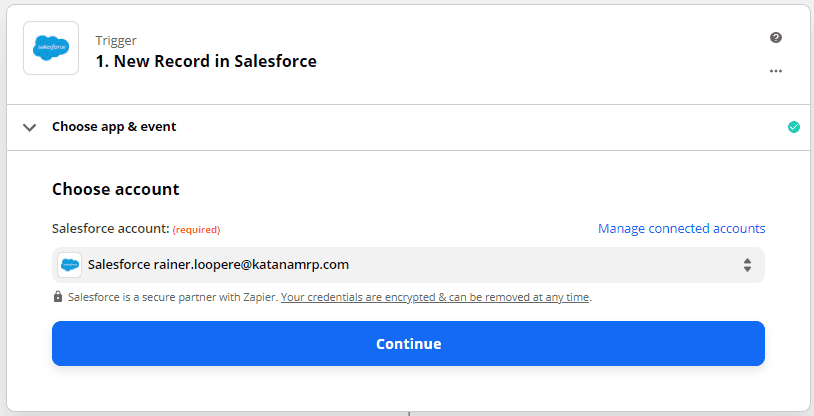
Step 3: Set the trigger as “Order Product” as you need to run Zapier imports per each line item, otherwise Salesforce orders won’t be sent to Katana with all the necessary information.
When orders are sent to Katana, the line items will be grouped back into a single order based on the Order Number.
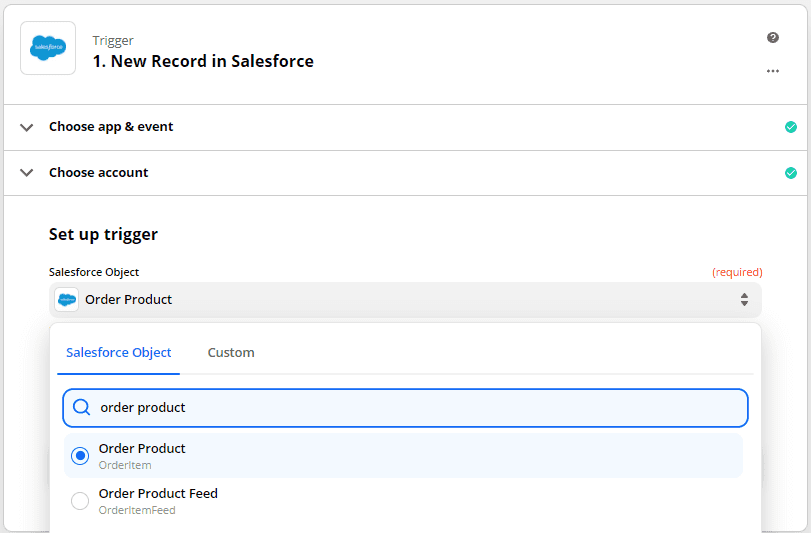
Step 4: Now it’s time to get all the relevant information sent from Salesforce to Katana, and in total, you need to set up four objects:
- Order product (which you have done)
- Order
- Product
- Account
So, same as before, select Salesforce as the app, but this time set the action event as “Find Record”
Choose the same Salesforce account, set the action as “Order” and select “Order ID” as the search value.
You can go ahead and map the “Order ID” from the previous “Trigger on new Order Product in Salesforce” step.
You’ll need to follow this process another two times to continue the set up. However, you’ll want to instead:
- Select “Product” as the action and “Product ID” as the search value
- Select “Account” as the action and “Account ID” as the search value
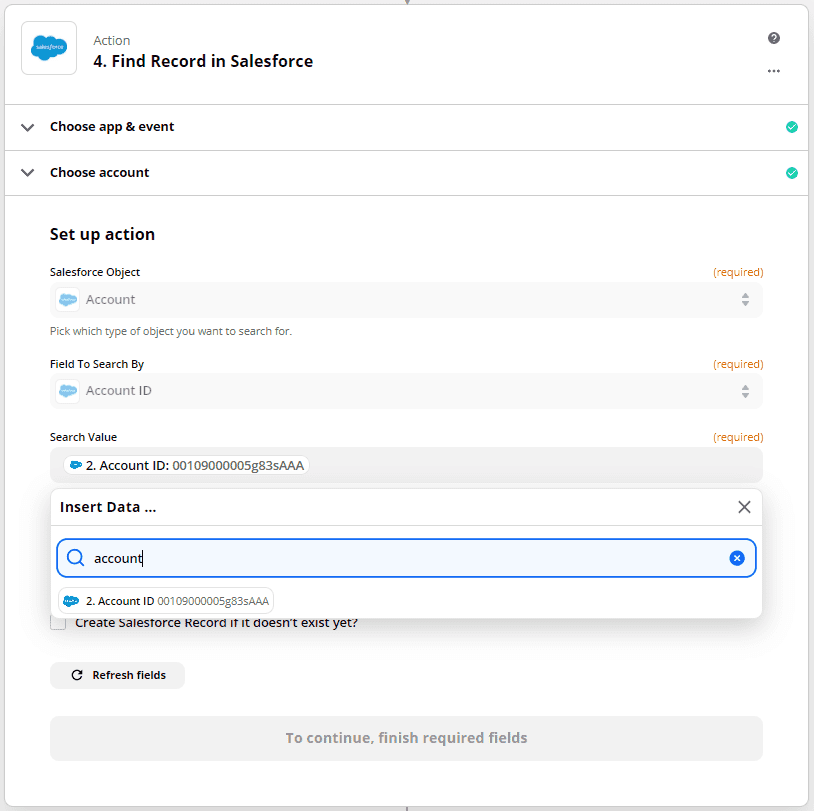
Step 5: Now you’ve set up the triggers, you can go ahead and set up the Action by selecting “Katana” and choosing “Find customer” to match your customer details in Katana and Salesforce.
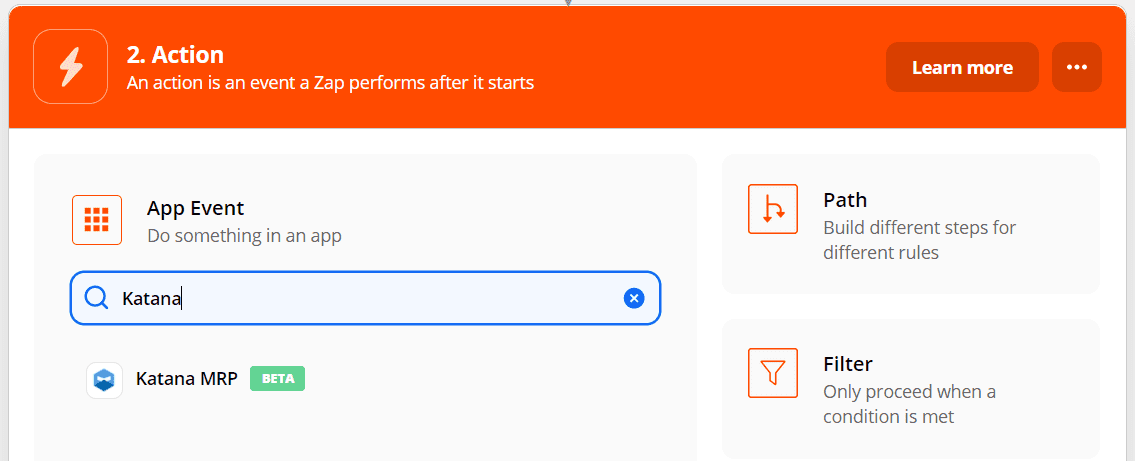
Step 6: After logging in to your Katana account, you can customize your customer information and search for them to match customers between both accounts. You can do this by selecting “Name” from in this case.
If you want to create new customers, you can select “Create Katana MRP Customer if it doesn’t exist yet?”
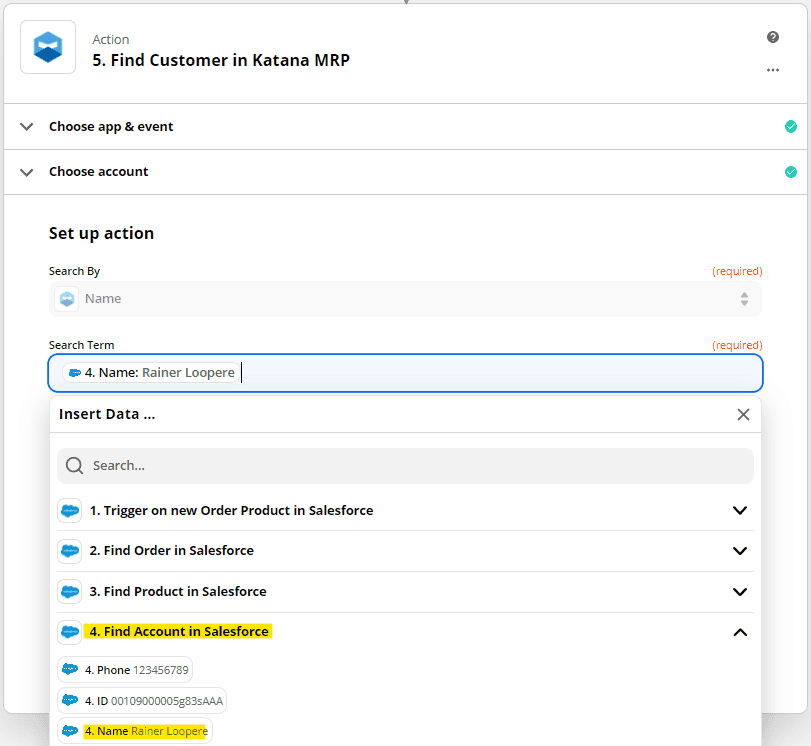
Step 7: Once the customer details are filled in you can now create the next action, which will be setting up your sales order imports from Salesforce.
However, to do so, go to “Customer ID”, go to “Custom”, then “2. Find or Create Customer in Katana MRP” and select “ID” from the Katana section.
This ID is not visible within the Katana user interface, but we recommend using it as a Customer ID in the Zap as it is a unique identifier.
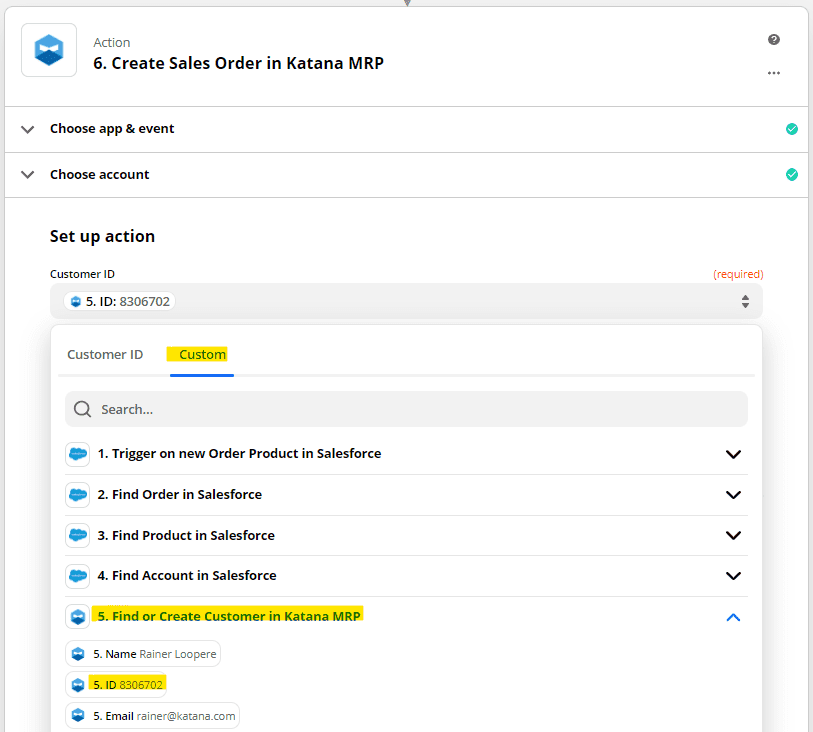
Step 8: As an Order Number, choose an appropriate identifier from Salesforce fields. We recommend using ID paired with a keyword “SF-”
This will generate orders like “SF-00000100”, “SF-00000200” and help you identify Salesforce orders in Katana.
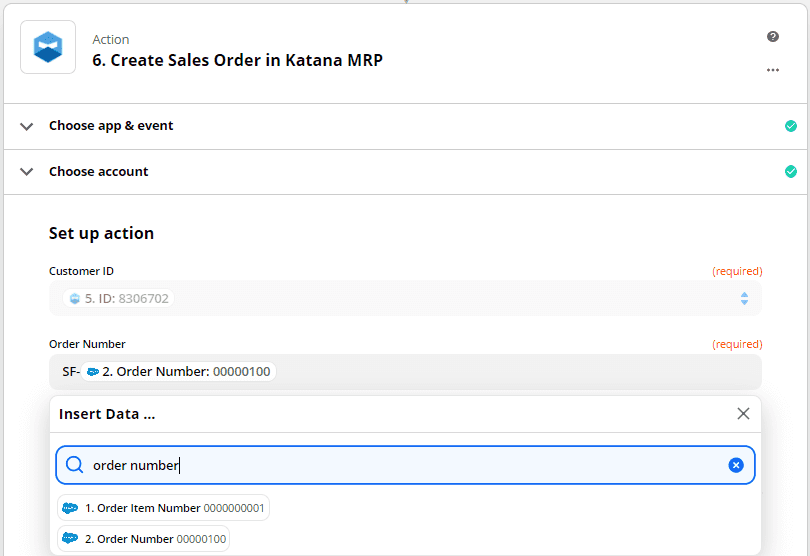
Step 9: And to finally wrap this process up, you can finish by defining the:
- Location
- Dates created
- Delivery dates
- SKUs
- Quantity
- Base price of your products
- Tax rates
What does the Katana x Salesforce update mean for you?
With Zapier, you can easily bridge the gap between your sales and manufacturing orders by automating your order management from Salesforce to Katana.
The great thing about Zapier is you can seize the initiative and create your own custom integrations in a matter of minutes and without any experience in coding.
If you haven’t already, you can check out how Zapier works with their 14-day free trial and fully automate your workflows.
However, if the Katana x Salesforce integration is enough for you, you can follow the in-depth setup guide over at the Knowledge Base.
Though we understand that the setup is pretty complicated. So, if you would like help with implementation, you can arrange a call, and we’ll guide you through the process.
And that’s it for today! If you have any questions, please feel free to get in touch with us, and we’ll be more than happy to answer them.
And until next time, happy integrating
Get inventory trends, news, and tips every month
Explore all categories
Get visibility over your sales and stock
Wave goodbye to uncertainty with Katana Cloud Inventory — AI-powered for total inventory control